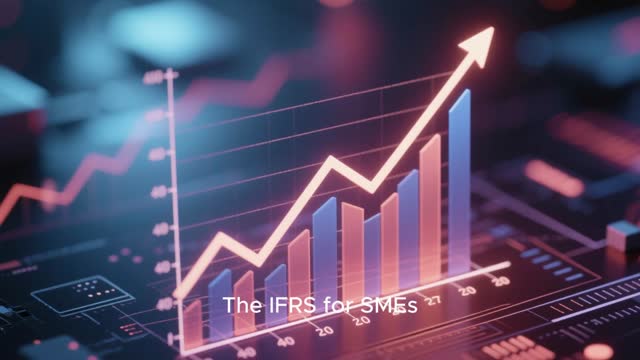No.24 (Jan 11, 2020)
Market Industry Trends
Joint $500,000 fund to fuel SME incubation. The UN Development Program (UNDP) in Cambodia announced a new joint $500,000 investment in grants and e-commerce training for 125 small and medium-sized enterprises (SMEs). The funds are backed by UNDP Cambodia, the Ministry of Commerce, and the World Trade Organization (WTO) Enhanced Integrated Framework (EIF). The investment will fuel an innovative six-month incubation and training initiative and small-grants program to help SMEs move online, sell online, and, for some, sell to overseas customers through a new online marketplace [B2B2C] being developed by the ministry. The quota is reserved for businesses owned by women and businesses based outside of Phnom Penh. (Phnom Penh Post)
221 new factories opened, 100 shut in 2020. New factories totaling 221 were opened and 100 were closed in 2020 according to the Ministry of Industry, Science, Technology, and Innovation. The newly established factories represent a diversity of products ranging from garments to high-technology-equipped factories manufacturing solar panels and electronic components. The closure factories were mainly garment manufacturers and sub-contractors supplying semi-finished products who faced production disruption due to Covid-19 issues. According to the latest data from the General Department of Customs and Excise, exports in clothes, footwear, and travel goods declined by 9% for the first 10 months of 2020. (Khmer Times)
Regulations
New framework for government securities. A law on government securities that aims to provide a framework for their issuance, trading, and management with transparency, accountability, effectiveness as well as the sustainability of public debt management has been officially ratified for implementation. It will help to strengthen the management of cash demands in response to financial needs for socio-economic development and financial markets in Cambodia as well as support other priority development projects in the country. Under this regulation, the minister can refund, buyback, and settle all government securities that have reached their maturity date or before then. All operations related to the issuing and management of government securities must be determined by a directive (prakas) from the government. The government securities can be issued as local or foreign currency here or abroad. It added the government will take full responsibility for the issuing of government securities. The total amount of money issued must be determined by the annual [public] financial management law (annual budget law). For additional issuance of government securities, the prime minister can send the request with the purpose of the transaction to the National Assembly for approval. The government securities can be issued as a printed certificate or in electronic form. Participants in the primary market can be banking and finance institutions granted a license from the National Bank of Cambodia, or securities firms granted one by the Securities and Exchange Commission of Cambodia or other institutions stated under the ministerial directive. Government bonds will be sold publicly on the primary market based on bidding price or other methods stated in the minister’s directive or prakas. (Khmer Times)
Cambodia-Malaysia double tax agreement now in effect. The double tax avoidance agreement (DTA) between Cambodia and Malaysia has come into effect with an optimistic view that bilateral investment between the two countries will increase. The agreement was made to prevent investors on both sides from paying income taxes on the same source of income and obliging them to pay where the profit was made. DTA would further reduce the tax burden on consumers and suppliers between the two countries. This mechanism will also increase the volume of bilateral trade and the inflow of foreign investment into Cambodia. According to the Council for the Development of Cambodia (CDC), Malaysia was the fifth-largest foreign investor in Cambodia in 2014 and 2018, bringing in $481 million. Cambodia exports to Malaysia are mostly agricultural products, while imports from Malaysia include electronic equipment and food products. (Phnom Penh Post)
Macro-economy
Ministry shares 2020 agri-export numbers. According to data from the Minister of Agriculture, Forestry and Fisheries, Cambodia exported $4.037 billion in agricultural products in 2020. The export commodities included milled rice, rice paddy production, cassava, cashew nuts, mango, rubber, banana, Pailin longan, pepper, birds’ nests, fisheries products, animal products, forestry products, and other goods. The agriculture export figures consisted of $61.30 million from animal products such as cattle, pork, and poultry as well as chicken and duck eggs and other animals. The fishery products including river and marine fish as well as aquaculture were recorded at $8.33 million. Exports of forestry products (processed timber), birds’ nests, leather products, and living monkeys, amounted to $44.08 million in value for the year. The nation’s export of subsidiary crops was valued at $2.17 billion while the total export of rubbers for the year was $482.76 million. Moreover, milled rice and rice paddy export were worth $538.8 million and $723.48 million respectively in 2020. (Khmer Times)
Cambodia, Thailand bilateral trade valued at $6.6 Billion in the first 11 months. Bilateral trade between Cambodia and Thailand was valued at $6.6 billion in the first 11 months of 2020, sliding down 22% compared to the same period last year. Figures from Thailand’s Ministry of Commerce showed that from January to November this year, Cambodia exported $1,071 million worth of products to Thailand, a year-on-year decrease of 51%. Meanwhile, Cambodia imported $5,580 million worth of products from Thailand, inching down 12% compared to that last year. In 2019, the two-way trade between the two countries worth $9.2 billion. (Khmer Times)
NBC projects a growth rate of four percent for 2021. The National Bank of Cambodia (NBC) has forecasted that the Kingdom’s estimated economic growth will be 4% in 2021, according to its Macroeconomic and Banking Sector Update 2020 report. The updates on the state of the nation’s economy, taking into account the devastation of the pandemic, had predicted an overall contraction of Cambodia’s economy of 1.9% in 2020. The latest NBC forecast is in line with international financial institutions’ predictions for Cambodia’s economic growth in 2021. Those figures range from 4% to 6.8%. The prediction depends on the strengthening of domestic economic activities and the speed in the recovery of economic partners who will support and mitigate the impact on Cambodia’s economy from the slowdown of export figures. According to the central bank, agriculture will be the sector with the highest potential to offset unemployment and support the livelihoods of the poor. It also identified that speeding up economic diversification and its implementation throughout the industrial sector would help the country’s economy recover faster from the current crisis. (Khmer Times).




